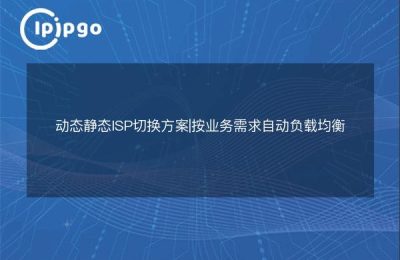
Proxy Dynamic IP Configuration and Application
Aha, Dear Readers, today we are going to talk about a rather interesting topic - "Proxy Dynamic IP Configuration and Application". Yes that's right, I didn't accidentally press the wrong keyboard, it's definitely the Proxy Dynamic IP that I'm talking about. you may ask, what is this thing for? Actually, using Proxy Dynamic IP can help us realize some interesting things.
What's an agent?
First of all, we have to understand the concept of "agent". To the editor's sense of humor as a prominent point of narrative ability, not lazy hands did not write all the meaning of that kind of ha, please pay attention to listen to the speech. Have you ever thought that if you are not feeling well and do not want to move, then you can find a substitute. Agent in the network understanding, in fact, this is the meaning. He is a kind of transit role, na, after receiving the order of the editor, he will replace you and the target server to communicate. Very interesting.
What's the deal with dynamic IPs?
Then, let's talk about "Dynamic IP". Dynamic IP, as the name suggests, is in the network world, the IP address will "move" the kind. You can think of it as your home address, every time you move, our address will change, sometimes the house is a little problem, so you move again, the address changed again. That's what it means.
Configuring Proxy Dynamic IP
Okay, above we briefly introduced the proxy and dynamic IP, the next is to teach you how to configure proxy dynamic IP. To configure a proxy dynamic IP, we first need to choose a suitable proxy service provider, such as the more popular ones nowadays are XX, YY, ZZ and so on. These proxy service providers will provide you with a special proxy IP pool, which has a lot of different IP addresses, we can replace them as needed at any time to achieve the effect of dynamic IP.
Well then, let's now bring you a little example of how to configure a proxy dynamic IP. Here is a sample code using Python:
import requests
proxy_pool = [
"192.168.0.1:8888",
"192.168.0.0.2:8888",
"192.168.0.3:8888",
"192.168.0.0.4:8888",
"192.168.0.5:8888"
]
def get(url).
proxy = random.choice(proxy_pool)
proxies = {
"http": proxy, "https": proxy
"https": proxy
}
headers = {
"User-Agent": "Mozilla/5.0 (Windows NT 10.0; Win64; x64) AppleWebKit/537.36 (KHTML, like Gecko) Chrome/58.0.3029.110 Safari/537.3"
}
response = requests.get(url, headers=headers, proxies=proxies)
return response.text
url = "https://www.example.com"
response = get(url)
print(response)See? The function of this code is to randomly select a proxy from the pool of proxy IPs we provide, and then use this proxy to access the specified URL. in this way, a different IP address will be used each time you access it, thus realizing the effect of dynamic IPs.
Proxy Dynamic IP Applications
Finally, let's talk about the use of proxy dynamic IPs. Well, there are many interesting ways to play with this one. For example, you can use proxy dynamic IP for web crawling, you can rotate between different IP addresses to avoid being blocked by the target server. Or, you can use Proxy Dynamic IP to solve certain restricted access problems, for example, you want to see some domestic videos, but because of copyright issues and can not access, this time using Proxy Dynamic IP, switch to other countries IP, you can easily solve the problem.
Of course, I strongly urge everyone here to comply with laws and regulations, do not use the proxy dynamic IP for illegal activities Oh.
Haha, today's topic is really interesting! Proxy Dynamic IP configuration and application, I hope that through the above explanation and sample code, you can have a clear understanding of this concept, and you can try to use Proxy Dynamic IP to realize some interesting things. Wish you all have fun oh!








